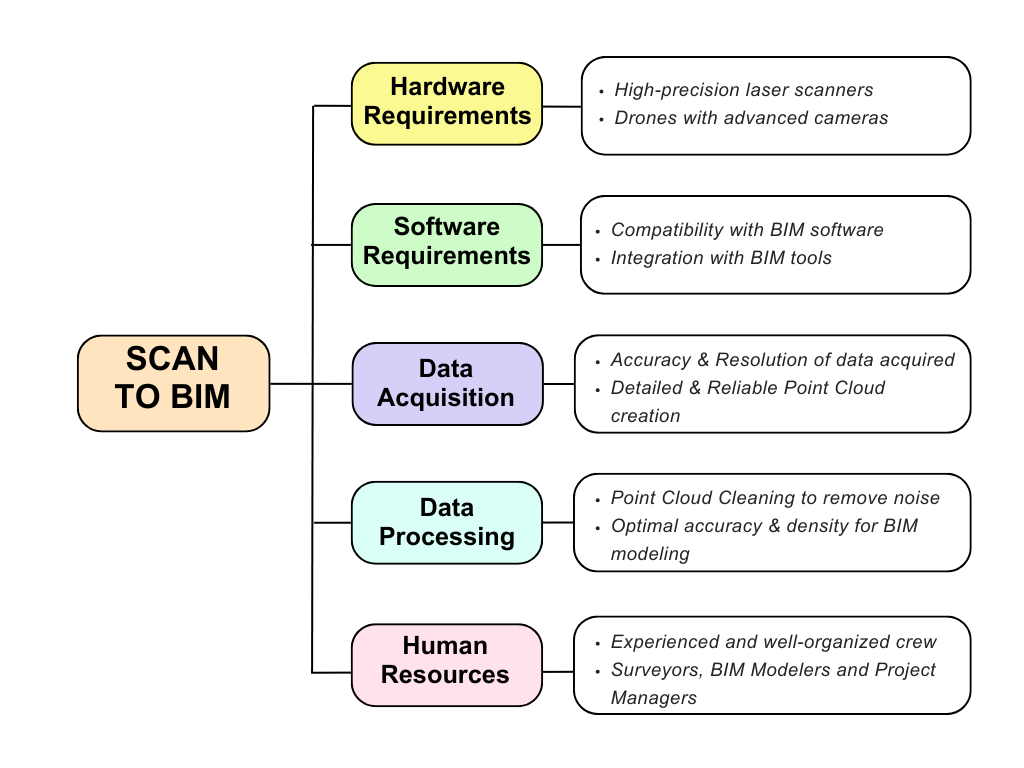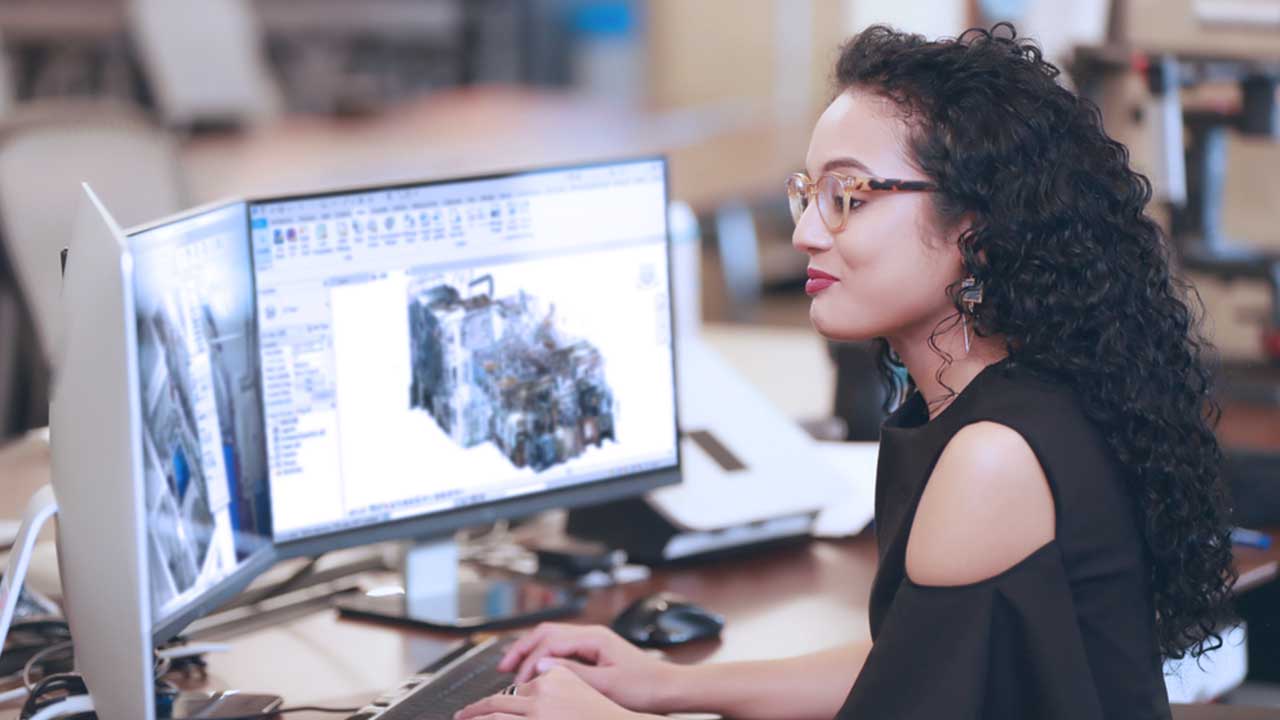The construction sector is experiencing a digital overhaul, and Scan to BIM is being used as a central technology for improving project efficiency and accuracy. This process provides an unmatched understanding of building projects by merging information gathered from laser scanning in the real world with the virtual environment of Building Information Modeling (BIM). Nonetheless, getting the most out of Scan to BIM requires careful, well-targeted efforts. In this article, we discuss vital aspects that make Scan to BIM projects successful ranging from hardware, software, human resources, and project management considerations.

Understanding the Process of Scan to BIM
Scan to BIM is an innovative technique in which laser scanning is used to capture the existing physical conditions and point cloud data transformed into intelligent 3D BIM models. The method has several advantages such as increased accuracy, better collaboration, and opportunities for savings. Scan to BIM brings a clear understanding of design, construction and building management by connecting the physical space with the digital environment.
To effectively implement Scan to BIM Services, it is important to understand what it entails. It starts with data acquisition through scanning with lasers which results in a point cloud model that is turned into a Building Information Model (BIM).
Essential Hardware and Software Requirements
An appropriate hardware and software foundation is the cradle of any successful scan to BIM project. High-precision laser scanners are necessary for capturing accurate 3D data of the physical environment. These scanners, which range from hand-held devices to fixed ones, have different levels of accuracy and speed designed to suit various project requirements.
Moreover, there are drones with advanced cameras that can be used for taking photos of external facades and site data on large scales.
To get maximum benefits from such data being captured; compatible BIM software must be in place. These applications should handle huge point cloud data effectively as well as register and align scans efficiently by converting point clouds into intelligent 3D models. Also, they need to integrate with other BIM tools such as design analysis and construction management thereby facilitating smooth operation.
The quality of the BIM model produced greatly depends on the accuracy and resolution of acquired data hence it is important to select hardware and software that meets specific project requirements.
Processing the Data Acquired
One of the cornerstones of a successful Scan-to-BIM project is the comprehensive data acquisition process. Detailed and reliable point cloud creation demands correct capturing of every detail down to the last inch. In this case, every critical area must be handled with care because there should be no repetitions.
In the processing phase, noise and unnecessary data are eliminated through point cloud cleaning while registration ensures that multiple scans are aligned to create a unified representation of space. Optimal accuracy and density in the point cloud are very crucial for BIM modeling hence influencing the precision and details of the final model thereby affecting decision-making during the project life cycle.
A strong foundation for an efficient Scan-to-BIM workflow needs appropriate data acquisition and processing techniques.
Human Resource and Experience
To navigate a BIM project scan, an experienced and well-organized crew is required. Surveyors with extensive experience using laser scanning equipment and gathering precise data are required. Success depends on these professionals’ in-depth understanding of the nuances of capturing minute details and guaranteeing data accuracy.
Equally important are BIM modelers with a deep understanding of point cloud processing, and conversion techniques. They create intelligent 3D models from raw data, which accurately represent the geometry and attributes of buildings. A smooth flow of the transferred information is achieved through effective collaboration between surveyors and BIM modelers.
Project managers oversee all aspects of the project, coordinating team activities, and monitoring adherence to deadlines as well as budgets. Their ability to handle anticipation levels, resolve conflicts, and make planned resolutions is crucial to achieving such projects.
Competence development demands investment in training. Continuous learning allows professionals to keep pace with scanning technology advancements and BIM software so that projects become more efficient.
Conclusion
To ensure the successful implementation of Scan to BIM, knowledge of hardware, software, human resources and a keen eye for project management are very necessary. For organizations to make effective use of this technology in enhancing project efficiency, accuracy and decision-making, they must carefully consider the crucial needs.
Although some challenges come with it, the merits outweigh the demerits. Taking up this new way can bring about massive improvements within the construction industry including design and construction aspects as well as facility management. In addition, as technology progresses Scan to BIM is set to become a key driver towards industry progress.
Thus, understanding these requirements and being able to meet them will allow organizations to achieve Scan-to-BIM’s potential fully.

